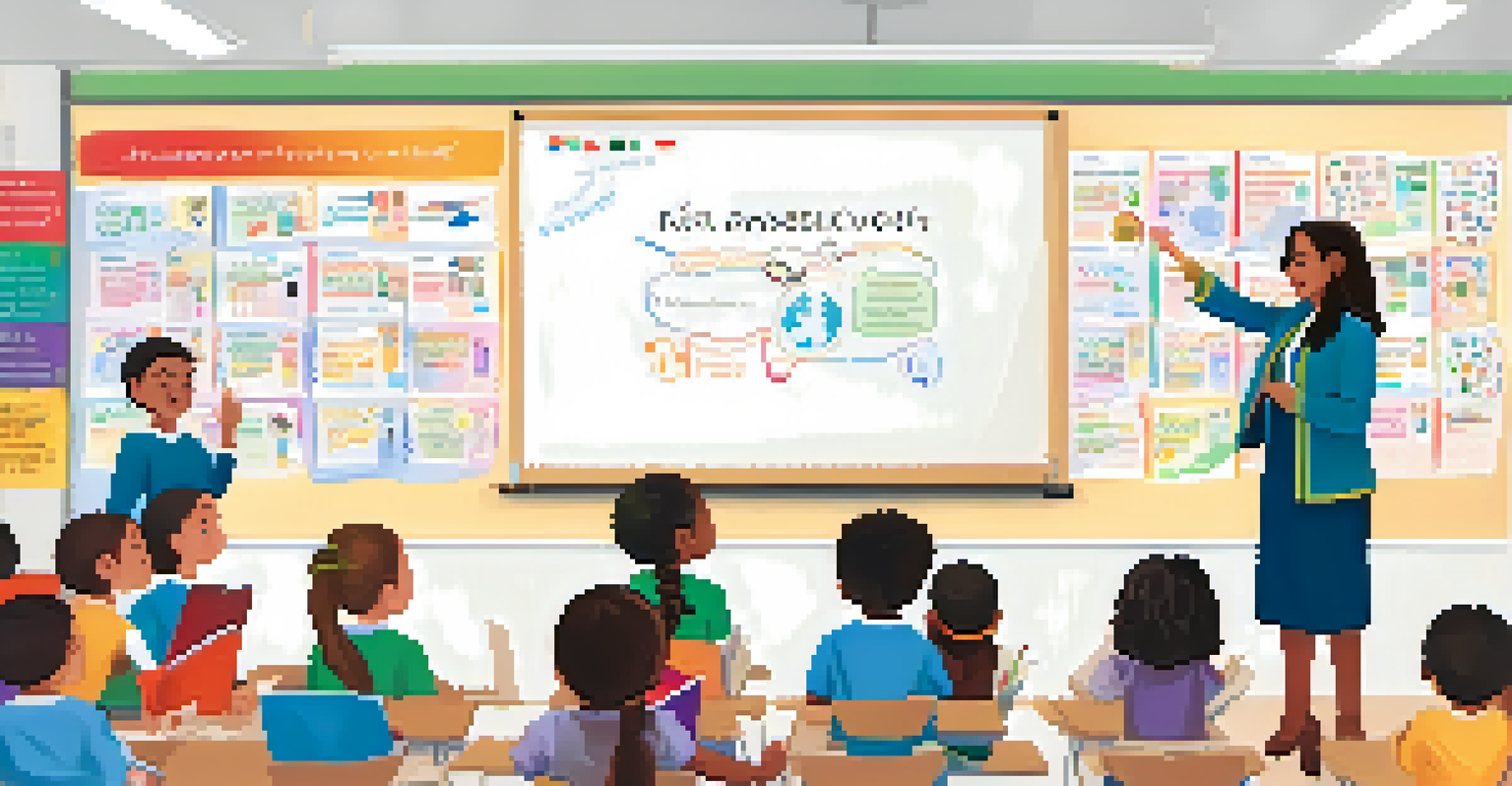Addressing Language Barriers in Digital Education Access

Understanding the Impact of Language Barriers
Language barriers in digital education can significantly hinder a learner's ability to absorb information. When students encounter educational content in a language they do not fully understand, it creates a disconnect that can lead to frustration and disengagement. This issue is particularly pronounced in diverse classrooms, where students may come from various linguistic backgrounds.
Language is the road map of a culture. It tells you where its people come from and where they are going.
Moreover, the rise of online learning has highlighted these challenges even further. As educational institutions shift to digital platforms, it's crucial to recognize that not all learners are equally equipped to navigate this new environment. This lack of understanding can exacerbate existing inequalities in access to education.
Ultimately, addressing language barriers is not just about translating content; it’s about fostering an inclusive learning environment where every student has the opportunity to succeed, regardless of their primary language.
Identifying Key Language Barriers in Digital Learning
Language barriers manifest in various ways, ranging from technical jargon to cultural nuances. For instance, a student may struggle with complex terms that are common in one language but have no direct translation in another. This can lead to misinterpretations and confusion, making it difficult for learners to grasp essential concepts.

Cultural context also plays a significant role in understanding educational materials. A phrase that resonates in one culture may not have the same impact in another, leading to disengagement or misunderstanding. Recognizing these nuances is vital for educators and content creators alike.
Language Barriers Hinder Learning
Language barriers can create significant obstacles for learners, leading to frustration and disengagement in digital education.
By identifying these key barriers, we can develop more effective strategies to ensure that all learners have equal access to digital education, paving the way for a more equitable learning environment.
Leveraging Technology to Bridge Language Gaps
Technology offers a wealth of tools that can help bridge language gaps in digital education. For example, automated translation services can make educational content more accessible to non-native speakers. While these tools are not perfect, they can provide a helpful starting point for understanding complex materials.
The limits of my language mean the limits of my world.
Additionally, platforms can incorporate multilingual support, allowing learners to choose their preferred language for navigation and content. This customization can enhance user experience and encourage students to engage with the material more effectively.
Ultimately, the goal is to create a seamless learning experience where technology acts as a facilitator rather than a barrier. By embracing these tools, educational institutions can promote inclusivity and accessibility for all students.
Creating Multilingual Educational Resources
Developing multilingual educational resources is a proactive approach to addressing language barriers. This can involve producing materials in multiple languages or providing subtitles and transcripts for video content. By doing so, educators ensure that students have access to the same quality of information, regardless of their language proficiency.
Moreover, involving native speakers in the creation of these resources can enhance cultural relevance and accuracy. Collaborative efforts can lead to more authentic content that resonates with diverse learner populations. This not only helps in understanding but also in building a sense of belonging.
Technology Bridges Language Gaps
Leveraging technology, such as automated translation services and multilingual support, can enhance accessibility and inclusivity in education.
Incorporating multilingual resources into digital education can significantly improve engagement and retention rates, ultimately leading to better educational outcomes for all students.
Training Educators to Address Language Barriers
Educators play a crucial role in addressing language barriers in digital education. Providing training and resources for teachers can empower them to better support multilingual classrooms. This training can include strategies for effective communication and culturally responsive teaching methods.
Additionally, educators should be encouraged to adopt a growth mindset when it comes to language diversity. By embracing the multilingual nature of their classrooms, teachers can create an environment that values and respects all languages and cultures. This approach fosters a more inclusive atmosphere where students feel safe to express themselves.
Ultimately, well-trained educators can act as advocates for their students, ensuring that every learner receives the support they need to thrive in a digital educational landscape.
Fostering Community Support for Language Diversity
Community support is essential in overcoming language barriers in digital education. Parents, local organizations, and community leaders can play a pivotal role in creating a supportive ecosystem for learners. By collaborating with educational institutions, they can help bridge gaps and promote language diversity.
For example, community workshops can provide resources and training for parents to assist their children in navigating digital learning platforms. These workshops can also raise awareness about the importance of language diversity in education, encouraging families to engage actively in their children's learning.
Community Support Enhances Learning
Engaging community members and resources fosters an inclusive environment that values language diversity and supports student success.
By fostering a strong community network, we can create a more inclusive educational environment that values and uplifts all languages, ultimately benefiting the entire learning community.
Evaluating the Effectiveness of Language Support Initiatives
To ensure that language support initiatives are effective, it’s crucial to evaluate their impact regularly. Collecting data on student engagement and performance can provide valuable insights into what’s working and what needs improvement. This evaluation process can involve surveys, feedback sessions, and academic performance tracking.
Additionally, involving students in this evaluation can lead to more tailored approaches. Their experiences and perspectives can highlight specific challenges and successes, allowing educators to make informed adjustments. This collaborative evaluation process fosters a sense of ownership among students and encourages their active participation in their learning journey.

By continuously assessing and refining language support initiatives, educational institutions can create a dynamic and responsive learning environment that meets the diverse needs of all students.